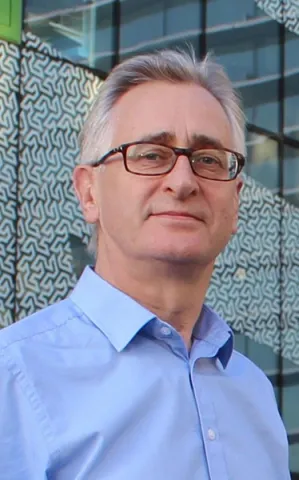Project overview
Silicon Photonics, the technology of electronic-photonic circuits on silicon chips, is transforming communications technology, particularly data centre communications, and bringing photonics to mass markets, utilising technology in the wavelength range 1.2 micrometres - 1.6 micrometres.
Our vision is to extend the technical capability of Silicon Photonics to Mid-Infrared (MIR) wavelengths (3-15 micrometres), to bring the benefits of low cost manufacturing, technology miniaturisation and integration to a plethora of new applications, transforming the daily lives of mass populations.
To do this we propose to develop low-cost, high performance, silicon photonics chip-scale sensors operating in the MIR wavelength region. This will change the way that healthcare, and environmental monitoring are managed. The main appeal of the MIR is that it contains strong absorption fingerprints for multiple molecules and substances that enable sensitive and specific detection (e.g. CO2, CH4, H2S, alcohols, proteins, lipids, explosives etc.) and therefore MIR sensors can address challenges in healthcare (e.g. cancer, poisoning, infections), and environmental monitoring (trace gas analysis, climate induced changes, water pollution), as well as other applications such as industrial process control (emission of greenhouse gases), security (detection of explosives and drugs at airports and train stations), or food quality (oils, fruit storage), to name but a few. However, MIR devices are currently realised in bulk optics and integrated MIR photonics is in its infancy, and many MIR components and circuits have either not yet been developed or their performance is inferior to their visible/near-IR counterparts.
Research leaders from the Universities of Southampton, Sheffield and York, the University Hospital Southampton and the National Oceanography Centre will utilise their world leading expertise in photonics, electronics, sensing and packaging to unleash the full potential of integrated MIR photonics. We will realise low cost, mass manufacturable devices and circuits for biomedical and environmental sensing, and subsequently improve performance by on-chip integration with sources, detectors, microfluidic channels, and readout circuits and build demonstrators to highlight the versatility of the technology in important application areas.
We will initially focus on the following applications, which have been chosen by consulting end users of the technology (the NHS and our industrial partners):
- Therapeutic drug monitoring (e.g. vancomycin, rifampicin and phenytoin);
- Liquid biopsy (rapid cancer diagnostics from blood samples);
- Ocean monitoring (CO2, CH4, N2O detection).





